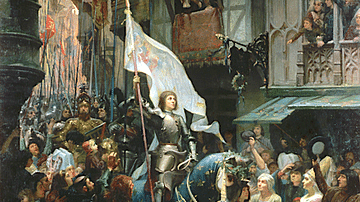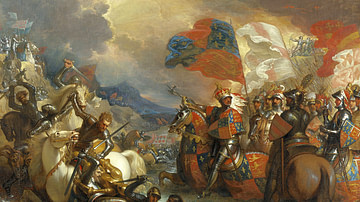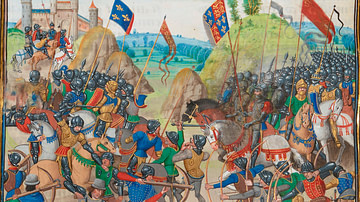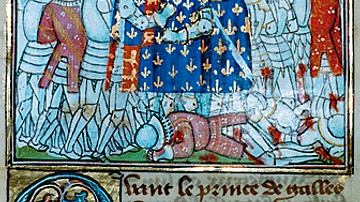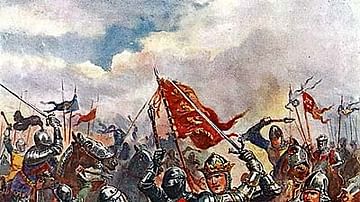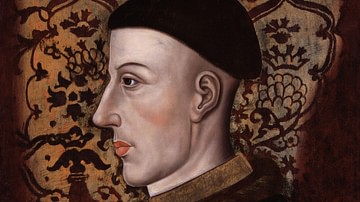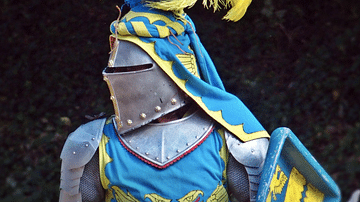Server Costs Fundraiser 2024
Help our mission to provide free history education to the world! Please donate and contribute to covering our server costs in 2024. With your support, millions of people learn about history entirely for free every month.
$3926 / $18000
Collection
There was a bitter rivalry between France and England throughout the 14th and 15th century CE and their frequent battles in this period are now known to history as the Hundred Years' War (1337-1453 CE). In this collection of resources, we examine the complex causes of the conflict, the major battles like Agincourt (1415 Ce) and the lasting consequences for the losers, England, and the winners, France. From Edward III of England (r. 1327-1377 CE) who started the whole thing off to Joan of Arc (1412-1431 CE), we look at some of the key figures and the spiralling events as two of Europe's most powerful states each battled to obliterate the other.
Both sides at the Battle of Crécy in 1346 CE had heavy cavalry of medieval knights and infantry but it would be the English longbow that proved decisive - then the most devastating weapon on the medieval battlefield. These longbows measured some 1.5-1.8 metres (5-6 ft.) in length and were made most commonly from yew and strung with hemp. The arrows, capable of piercing armour, were about 83 cm (33 in) long and made of ash and oak to give them greater weight. A skilled archer could fire arrows at the rate of 15 a minute or one every four seconds.
Subscribe to this author
About the Author
![Mark Cartwright]()
Mark is a full-time writer, researcher, historian, and editor. Special interests include art, architecture, and discovering the ideas that all civilizations share. He holds an MA in Political Philosophy and is the WHE Publishing Director.
Free for the World, Supported by You
World History Encyclopedia is a non-profit organization. For only $5 per month you can become a member and support our mission to engage people with cultural heritage and to improve history education worldwide.
Become a Member
Donate
License & Copyright
Uploaded by Mark Cartwright, published on 21 May 2020. The copyright holder has published this content under the following license: Creative Commons Attribution-NonCommercial-ShareAlike. This license lets others remix, tweak, and build upon this content non-commercially, as long as they credit the author and license their new creations under the identical terms. When republishing on the web a hyperlink back to the original content source URL must be included. Please note that content linked from this page may have different licensing terms.

